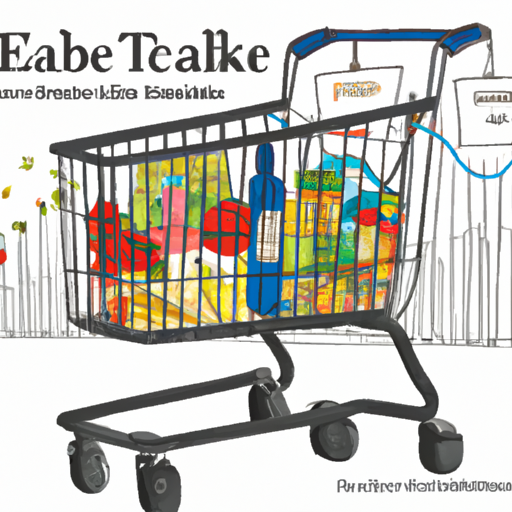What Is Market Basket Analysis
So you’re curious about market basket analysis, huh? Well, this article is here to break it down for you in plain, conversational language. Market basket analysis is a powerful tool used by businesses to understand consumer behavior, especially when it comes to purchasing patterns. By analyzing the items that customers commonly purchase together, companies can gain valuable insights into product bundling, cross-selling opportunities, and even store layout optimization. In this article, we’ll dig into the nitty-gritty of what market basket analysis is and how it can benefit both businesses and customers alike. So, let’s get started, shall we?
Table of Contents
What Is Market Basket Analysis?
Market basket analysis is a data mining technique used by businesses to understand the relationships between products that customers purchase together. It involves analyzing transaction data to identify patterns and associations between items that are frequently bought together. By gaining insights into these product associations, businesses can make informed decisions to improve their sales and marketing strategies, ultimately increasing revenue and enhancing the customer experience.
Definition
Market basket analysis, also known as association rule mining or affinity analysis, is a method used to uncover associations between items based on customer purchase behavior. It involves the extraction of patterns or rules from transactional data, where each transaction represents a customer’s purchase. These rules suggest the likelihood of certain items being bought together, providing valuable insights to businesses.
Purpose of Market Basket Analysis
Identifying Product Associations
One of the main purposes of market basket analysis is to identify product associations. By examining transactional data, businesses can uncover which items are frequently purchased together. For example, a grocery store might discover that customers who buy bread are also likely to purchase butter and milk. This insight can help businesses optimize their product placement, cross-selling, and upselling strategies, as well as identify potential product bundles or promotions to drive greater sales.
Improving Sales and Marketing Strategies
Another purpose of market basket analysis is to improve sales and marketing strategies. By understanding the relationships between products, businesses can effectively target their marketing campaigns and promotions. For instance, if a clothing retailer finds that customers who buy jeans often purchase t-shirts as well, they can create targeted advertising or promotional offers for these combinations. This not only improves the likelihood of upselling but also enhances the overall customer experience by providing relevant and personalized recommendations.
Benefits of Market Basket Analysis
Increased Revenue
One of the significant benefits of market basket analysis is its potential to increase revenue. By identifying product associations and deploying targeted marketing strategies based on these insights, businesses can encourage customers to add complementary items to their purchases. This can result in higher average order values and increased sales. Additionally, market basket analysis enables businesses to identify high-demand product combinations, allowing them to optimize their inventory management and ensure that popular items are always in stock.
Improving Customer Experience
Market basket analysis also benefits customers by enhancing their overall shopping experience. By leveraging the insights gained from analyzing transaction data, businesses can personalize recommendations and offers based on individual customer preferences and buying patterns. This creates a more tailored and satisfying shopping experience, where customers are more likely to discover additional items they may want or need. By providing relevant recommendations, businesses can improve customer satisfaction and loyalty.
Methodology
Market basket analysis follows a systematic methodology to extract valuable insights from transactional data. The process typically includes the following steps:
Transaction Data Collection
The first step in market basket analysis involves collecting transactional data. This data may come from various sources, such as point-of-sale systems in brick-and-mortar stores or online shopping carts. It is essential to ensure that the data collected is comprehensive and accurate, as this forms the foundation for identifying product associations.
Itemset Generation
Once the transactional data is collected, the next step is to generate itemsets. Itemsets represent the sets of items that are purchased together in transactions. There are various approaches to itemset generation, but two common methods are the frequency-based approach and the Apriori algorithm. The frequency-based approach ranks items based on their individual frequency of occurrence, while the Apriori algorithm identifies associations through iterative steps of candidate generation and pruning.
Rule Generation
After generating itemsets, the subsequent step is to generate rules from these itemsets. Rules are conditional statements that describe the relationships between items. The generation of rules is typically based on metrics such as support, confidence, and lift. Support measures the frequency of a rule occurring, confidence indicates the likelihood of an item being purchased given the presence of another item, and lift measures the strength of the association between items.
Evaluation and Validation
The final step in market basket analysis involves evaluating and validating the generated rules. This is done by setting thresholds for confidence and lift values to filter out less significant rules. Additionally, statistical significance measures, such as chi-square tests or p-values, may be used to ensure that the generated rules are statistically valid.
Transaction Data Collection
Collecting transaction data is a crucial step in market basket analysis as it forms the basis for understanding product associations and making data-driven decisions. This data can be collected from various sources, depending on the nature of the business.
Collecting Point-of-Sale Data
For brick-and-mortar businesses, point-of-sale (POS) systems capture transaction data at the time of purchase. This data typically includes information such as the items purchased, the quantity of each item, and the transaction ID. By analyzing this data, businesses can gain insights into which products are often purchased together. It is essential to ensure that the POS data is accurate and comprehensive to obtain reliable results.
Analyzing Online Shopping Carts
For online retailers, transaction data can be obtained by analyzing customers’ online shopping carts. Each customer’s cart represents a transaction, and by examining the items added to the cart, businesses can identify associations between products. Online shopping cart data can include additional information such as timestamps, customer demographics, and browsing behavior, enhancing the analysis and providing deeper insights into customer preferences.
Itemset Generation
Generating itemsets is a critical step in market basket analysis, as it forms the basis for rule generation. Itemsets represent sets of items that are frequently bought together. There are various approaches to itemset generation, including the frequency-based approach and the Apriori algorithm.
Frequency-Based Approach
The frequency-based approach ranks items based on their individual frequency of occurrence. Items that are frequently purchased are considered relevant for analysis. This approach enables businesses to identify popular products and their associations.
Apriori Algorithm
The Apriori algorithm is a widely used method for itemset generation. It involves iterative steps of candidate generation and pruning to identify frequent itemsets. The algorithm starts with individual items and progressively generates larger itemsets based on their frequencies. By applying a minimum support threshold, the algorithm filters out infrequent itemsets, ensuring that only significant associations are considered.
Rule Generation
Rule generation is a crucial step in market basket analysis as it allows businesses to uncover and understand the associations between items. Rules are conditional statements that describe relationships between items and are generated based on metrics such as support, confidence, and lift.
Support
Support measures the frequency of a rule occurring within the transaction dataset. It indicates how frequently a specific itemset or association occurs relative to all transactions. Higher support values indicate stronger associations, as they are more frequently observed.
Confidence
Confidence measures the likelihood of an item being purchased given the presence of another item. It is calculated as the ratio of the support of the combined items (antecedent and consequent) to the support of the antecedent item alone. Higher confidence values indicate a stronger relationship between the items in the rule.
Lift
Lift measures the strength of the association between items. It compares the observed support of the rule to what would be expected if the items were independent. A lift value greater than 1 indicates that the items are positively associated, while a lift value less than 1 suggests a negative association or substitution effect.
Evaluation and Validation
After generating rules, it is essential to evaluate and validate their significance. This step ensures that the rules generated are meaningful and can be effectively utilized for decision-making.
Confidence and Lift Thresholds
Setting confidence and lift thresholds is an important aspect of evaluating rules. This involves determining the minimum acceptable values for confidence and lift that indicate a significant relationship between items. Setting appropriate thresholds is key to ensuring that only meaningful and actionable rules are considered.
Statistical Significance Measures
In addition to confidence and lift thresholds, statistical significance measures can be employed to validate the generated rules. Techniques such as chi-square tests or p-values can assess the likelihood of observing the rule based on chance. Statistical significance measures provide an additional layer of validation and help ensure that the identified associations are statistically valid.
Challenges of Market Basket Analysis
While market basket analysis offers valuable insights, it also comes with its own set of challenges that businesses must navigate.
Data Quality and Completeness
One of the main challenges of market basket analysis is the quality and completeness of the transaction data. Inaccurate or incomplete data can lead to unreliable results and flawed insights. It is crucial for businesses to ensure the accuracy and integrity of the data collection process to obtain meaningful and actionable results.
Privacy Concerns
Market basket analysis requires the use of customer transaction data, raising concerns about privacy and data protection. Businesses must ensure compliance with data privacy regulations and take appropriate measures to anonymize and protect customer information. Transparent communication and obtaining customer consent for data usage are essential to address these privacy concerns.
Interpretation and Implementation
Interpreting and implementing the insights gained from market basket analysis can also be challenging. Understanding the relationships between items is one thing, but translating these insights into actionable strategies requires careful planning and execution. Businesses need to align the findings with their overall sales and marketing objectives and develop comprehensive action plans to optimize their operations based on the identified associations.
In conclusion, market basket analysis is a valuable technique for businesses looking to understand product associations and improve their sales and marketing strategies. By analyzing transactional data, businesses can identify which items are frequently purchased together and leverage these insights to increase revenue and improve the customer experience. Despite the challenges involved, market basket analysis offers significant benefits, enabling businesses to make data-driven decisions and better meet the needs and preferences of their customers.






